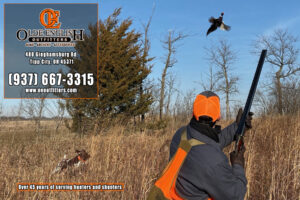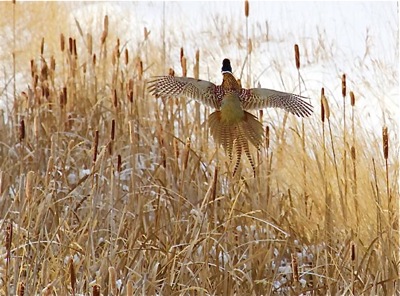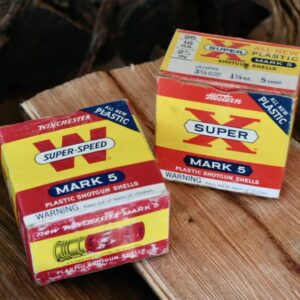The discussion has raged for years – what’s the best dog, and what’s the best gun for upland hunting? In the end, the answer is what works best for you and a commitment to the memories of how it came to be.
By Jim Abrams for Press Pros
 While talking to some friends about their recent grouse and woodcock hunting trips to Michigan, our conversation turned to what the best choices are in upland dogs and shotguns. Pointers or flushers? Setters or retrievers? Break-action or repeater? 12 gauge or 20?
While talking to some friends about their recent grouse and woodcock hunting trips to Michigan, our conversation turned to what the best choices are in upland dogs and shotguns. Pointers or flushers? Setters or retrievers? Break-action or repeater? 12 gauge or 20?
I really enjoy these conversations and their impassioned accounts of what had led them to their decisions. Most felt their choices were perfect. As the oldest in the group, I smiled as I listened to the storied explanations. That’s when I asked if their opinions were flexible. Each stopped and thought a moment. “Someday, I’d like to try a 28 gauge,” said one.

Retired wildlife officer Jim Abrams regularly writes about the great outdoors for Press Pros Magazine.
Another’s hand fell to the old springer beside him as he quietly confessed, “I love my boy – but I’ve always thought about an English setter.” The others in the group nodded as they contemplated their options and tossed out a wish or two.
Finally, they looked at me. “Well, you started this. So, what is the perfect combination for upland hunting?” I tossed out a few preferences but I really didn’t explain my choices. “Seems like you have a lot of favorites,” one in the group grinned. That comment was left hanging as we went our separate ways that afternoon but the remark stuck in my head. Maybe they deserve a bit of an explanation.
When I was 16, a high school friend would carry a well-worn Fox Sterlingworth. He hated that old-timer and once we were in the field, he’d trade me for my more modern Winchester pump. One crisp, frost-heavy November day my little beagles, Gretchen and Chipper, were really on their game. A wild flushing covey of quail put that old Fox to the test. To my own surprise, I doubled. Later, during the approaching twilight, a single pheasant fell to the 16-gauge Fox. Nothing will ever replace that combination.
A couple short years later, those same hounds and I were walking the field margins of a neighboring farm. My high-school buddy had left for the Marines and his dad regained possession of that Sterlingworth. I’d managed to save enough farm-work cash to buy an Ithaca-SKB 20-gauge double to replace it. On this day, my mind was more occupied with the worry of the next morning’s surgery on a poorly healed broken ankle.
 As the dogs nosed through the brush and snow, Gretchen suddenly rushed off. In a frantic dash, she sprinted 30 yards into a corn stubble field. Looking like an unhinged torpedo, her short legs churned through the snow leaving a clouded mist in her wake. Two pheasants burst from their invisible hides and catapulted into the air; one giving a rooster’s cackle as it turned to follow the wind. At the report, a burst of feather floated on as the pheasant fell. Chipper, sprinting into the excitement, picked up the bird and proudly marched it back to me as Gretchen tried following the departing hen. Nothing will ever replace that combination.
As the dogs nosed through the brush and snow, Gretchen suddenly rushed off. In a frantic dash, she sprinted 30 yards into a corn stubble field. Looking like an unhinged torpedo, her short legs churned through the snow leaving a clouded mist in her wake. Two pheasants burst from their invisible hides and catapulted into the air; one giving a rooster’s cackle as it turned to follow the wind. At the report, a burst of feather floated on as the pheasant fell. Chipper, sprinting into the excitement, picked up the bird and proudly marched it back to me as Gretchen tried following the departing hen. Nothing will ever replace that combination.
Years went by and; at the suggestion of a well-seasoned gunner, I bought a Browning Superlight. Shadow, my springer-pointer mix, was poking about in the greenbrier and deadfalls at Highlandtown Wildlife Area. His tail was frantically wiggling away his anxiety as he hurried from left to right and back again. He suddenly froze in mid-rush then made a pounce and a leap in an attempt to catch a now airborne ruffed grouse. At the gun’s bark, the bird toppled.
Shadow hurried to pick it up but, on the way back, he made an unexpected sprint to my left and slightly behind me. Another bird took flight and a reflexive snap-shot brought it down. He struggled to pick up the second bird without releasing the first. It wasn’t working for him so I lent a hand. Nothing will ever replace that combination.
 While I was in high school, I chanced upon a magazine column about Gordon setters. Included was a photo of one of those Scottish pointers walking along an autumn lane; his hunter carrying a svelte 28-gauge double. That picture became something of a dream to me.
While I was in high school, I chanced upon a magazine column about Gordon setters. Included was a photo of one of those Scottish pointers walking along an autumn lane; his hunter carrying a svelte 28-gauge double. That picture became something of a dream to me.
Fast-forward to another autumn day 25 years later. Gus the Gordon and I were hunting woodcock at Killdeer Plains Wildlife Area. The frequency of finding the little birds is always a combination of witchery and luck but I was keeping my fingers crossed. True to that old photo, I was carrying a gracefully light 28 double. I was hoping Gus might find his first woodcock in the damp falling leaves.
Though his black coat and wooded shadows made him nearly invisible, a brass bell dangling from his collar jingled with his movements. Suddenly, the telltale tinkling stopped. I knew where he’d been but wasn’t sure of his current location. I was concerned he’d gone out of hearing range when I spotted him just fifty-feet distant. His tail high, he was ever-so-carefully inching forward. I quietly moved toward him and gently said “whoa,” stretching the word into a pleading, three-second request. One more step and a woodcock burst into vertical flight.
The leaves; ignoring autumn’s commands, were still heavy on both the trees and the understory. I punched the lightweight shotgun in the direction of the bird and fired. No way would that touch a feather. Gus rushed forward to examine the area and suddenly froze again. I walked up and there lay the woodcock, the dog’s nose inches away. Nothing will ever replace that combination.
 Now there’s Briar; my little English cocker; full of a stubborn personality attached to an endlessly gyrating tail. Having returned to carrying a 16 double, we were visiting Elkhorn Hunt Club for her first venture in the field. She coursed ahead in her run-run-hop fashion, her Dumbo-inspired ears flapping with each leap. Her first flush was out of range and I coaxed her to shorten her patterns. The wafting scents were overwhelming that twitching black nose.
Now there’s Briar; my little English cocker; full of a stubborn personality attached to an endlessly gyrating tail. Having returned to carrying a 16 double, we were visiting Elkhorn Hunt Club for her first venture in the field. She coursed ahead in her run-run-hop fashion, her Dumbo-inspired ears flapping with each leap. Her first flush was out of range and I coaxed her to shorten her patterns. The wafting scents were overwhelming that twitching black nose.
Then it happened. The gaudy flurry of a pheasant escaping her frenzied rush put the bird firmly within range. A hurried first shot missed but my finger quickly found the second trigger and the bird dropped. Briar rushed over and began to bring it back. She stopped, dropped it then repeated the effort only to stop again. I encouraged her with “good girl” and “bring me the bird.” Through patience and a little sweet-talking, she made the retrieve. The rest of the day, she walked with a chest-out strut daring any pheasant to show itself. Nothing will ever replace that combination.
In the end, I guess the best combination is what helps to write a memorable chapter in your own history. For me, its dogs and doubles but of no particular pedigree, gauge or manufacture. I know that without them, somehow, my life wouldn’t be complete.
“When your life flashes before your eyes at the end, make sure it’s a good movie you’re watching.” – Stewart Stafford
Abrams is a retired wildlife officer supervisor for the state Division of Wildlife in Findlay. He can be reached at P.O. Box 413, Mount Blanchard, OH 45867-0413 or via e-mail at jimsfieldnotes@aol.com.

The best answer to 'what's best' is simply what works best for you? Question a hundred hunters and you're likely to get a hundred different answers. (Press Pros Feature Photos)

